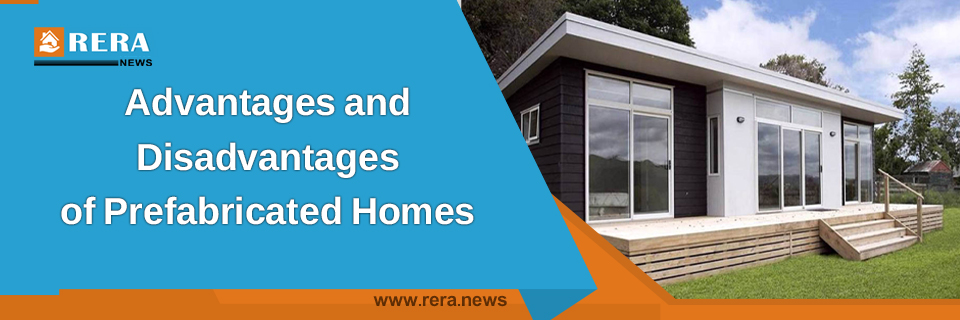
Prefabricated homes are the new norm in home construction. Prefabricated homes, also called modular homes, are constructed in a factory setting under controlled conditions before being transported to the construction site. There has been much discussion on whether to build dwellings on-site or use prefabricated homes. It can be challenging and perplexing to choose between these two possibilities. This article provides information on the benefits and drawbacks of building a prefabricated home to help you decide and prepare for the process.
Prefab is an acronym for prefabricated dwellings; that is all you need to know about them. These houses are built in a factory setting and then delivered entirely constructed. As you might anticipate, compared to a traditional home, this sort of home is straightforward to develop and move.
Types of prefabricated home
There are three primary types of prefab housing: manufactured, kit, and modular. Here is a quick explanation of each:
Manufactured homes: This type of home is constructed in sections and assembled on-site using skilled labour and large machinery. However, these must adhere to HUD regulations.
Kit Homes: Despite having a similar construction style to manufactured homes, these homes are substantially simpler. Most buyers of homes can put together a kit home themselves.
Modular homes: These homes provide a great deal of customization; businesses frequently allow you to alter the floor plan before purchasing. Modular homes, however, don't have movable foundations like prefabricated or kit homes do.
Now that you know about the numerous possibilities, let's go over the advantages of buying a prefabricated home.
Affordability
Prefabricated homes can be built for 10% to 20% less than a traditional or kit home. You will be given a set cost at the beginning of the process because the factory's controlled environment allows us to prevent cost overruns. In addition, we can offer our customers substantial discounts because of the volume of houses we build and the bulk purchasing arrangements we have with our suppliers.
Controlled environment
Prefab homes are built inside a specially designed factory, allowing for complete control over every aspect of the construction process. As a result, it will be more comfortable to set and maintain the build's budget and schedule. Additionally, Genius Homes can guarantee that your home is constructed to the highest standards because the entire body is completed in the factory under direct supervision.
Energy Efficient
Prefab houses are more environmentally friendly than traditional houses in many ways. These houses are airtight and made to lose as little energy as possible. Many manufacturers today are going above and beyond to create energy-efficient homes. For instance, they include rainwater collection systems and solar panels.
Fast Construction
One of the significant advantages of prefab homes is quick construction. An assembly of the parts that are already prepared is required to assemble a prefab home and connect it to utilities. However, there are other factors to take into account besides just the duration of the building. For example, the site preparation process, which includes getting permits, might take a while.
Prefab homes do have some disadvantages in addition to these beautiful advantages. They are:
Land Costs
A prefabricated home must be built on land to be constructed. It implies that, unless you have some extra land hanging around, you'll need to spend more money to find a suitable home. In addition, it can lead to issues because you must confirm that buying land can support construction. For instance, you'll have to pay someone to level the ground if it isn't.
Finding your land
If you decide to build a prefab home, you will need to find and pay for a plot of land to put it on. It may take longer and cost more than purchasing a house and land package, but it also gives you more choice over the final destination. In addition, depending on the state of the site you choose, any work needed to prepare the land for a prefab home, such as removing or adding soil, will also be an additional expense to account for in your budget.
Limited Customization Options
A prefabricated home cannot be customised the same way a stick-built one can, despite the more straightforward building procedure and fewer alternatives. With a traditional home, the options are endless: anything you can imagine or create. With a prefab, your options are limited to what the manufacturer provides.
Finding utilities could be challenging.
Prefabricated homes have a few drawbacks, including difficulty planning for utilities and other site-specific requirements. First, you must have your site levelled if it is uneven. Next, you'll need to lay the groundwork, make arrangements for sewer and electricity connections, and hook up to city water or find a well. Look for a prefab home that offers the option to have the prefab home company handle these details if you find the whole thing overwhelming.
The cost of a prefab house will change depending on how much work you're willing to do versus how much labour you're eager to assign to others. Some adventurous homebuyers might purchase a prefab home kit and assemble it with a few friends because prefab homes are getting more famous. RERA news will provide you with information to find out a wide range of prefab homes and construction solutions for prefab housing.
© 2023 Rera News. All rights reserved.